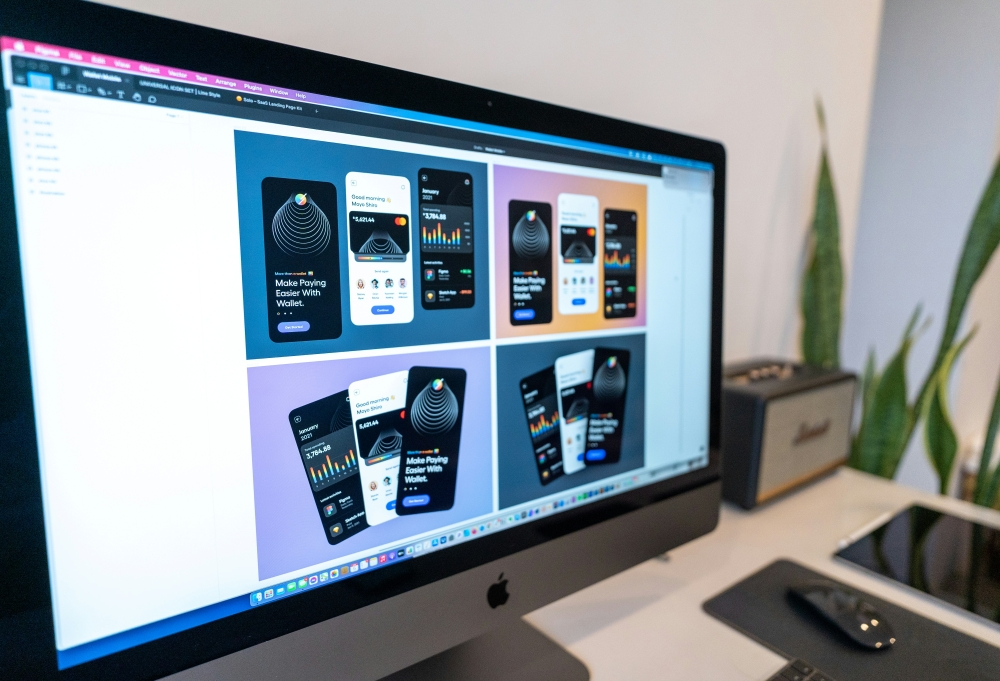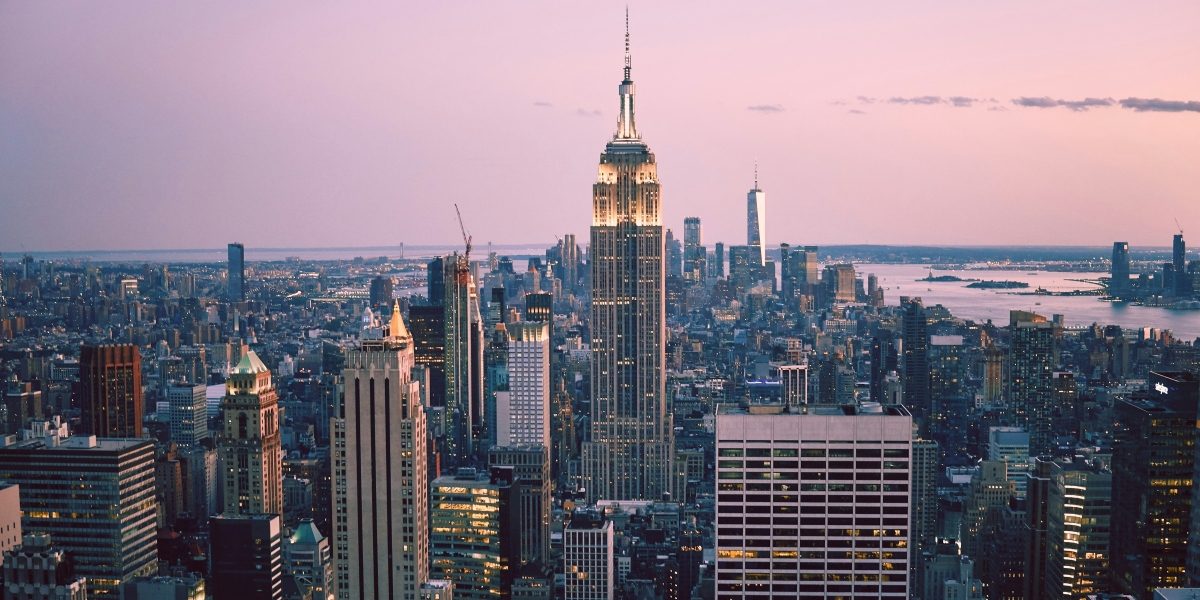New York has always set the pace for website design changes. A website is no longer just a digital business card but rather a converting channel and a primary source of income.
In 2025, web design in NY simply must meet local customer needs. It keeps up with the fast pace of business and serves an audience that prefers the best digital experiences.
Below, you will find some of the current web design trends that shape the local industry, along with some recommendations and practical advice.
Reasons Why Web Design Trends in New York That Matter
Web design trends change too fast, especially in New York.
And this is where working with a Manhattan web design agency can help NY companies align with local web design trends. They know the market and can better advise on modern trends professionally.
Let’s go through them one by one and see what local companies focus on today to attract local customers.

1. Hyper-Local Design for Neighborhood Identity
Companies in New York use design to highlight their connection to specific neighborhoods, in some sense.
As an instance, a restaurant in Williamsburg (one of NYC’s neighborhoods) might showcase Brooklyn-inspired visuals, while a law firm in Midtown can use imagery that reflects Manhattan’s professional tone.
In this case, hyper-local branding makes websites feel authentic and creates stronger emotional ties with nearby customers.
For local companies, this means investing in photography, colors, and typography that align with the immediate community. A generic design could work in another city, but local customers often prefer businesses that speak their language and reflect their surroundings.
This approach works well especially for local restaurants, boutiques, gyms, and service-based businesses that rely on community loyalty.
2. Minimalist Layouts With Bold Typography
Minimalism has grown steadily recently in NYC. And businesses now focus on clean layouts and bold typography.
A visitor’s attention is directed toward the most important messages, whether it’s a value proposition, a call to action, or a headline describing services.
This benefits New York businesses specifically, because customers here tend to browse quickly. They scan websites rather than reading line by line.
When reducing unnecessary details and highlighting core offers with large fonts, businesses improve retention and boost conversion rates.
Plus, minimalist design also loads faster, which matters for SEO rankings and for customers on mobile devices.
3. Mobile-First Design With Accelerated Load Times
New Yorkers rely heavily on mobile devices. From commuters on the subway to executives checking services between meetings, mobile browsing dominates.
Today, local web designers prioritize mobile-first approaches.
Websites are built for small screens before they are adjusted for desktops. This method ensures seamless navigation, clear calls to action, and quick load speeds.
Local businesses that invest in mobile-first design gain an edge over competitors who still treat mobile as secondary. A site that lags or misaligns elements on a phone screen risks losing valuable leads.
For instance, NYC real estate agents who provide instant property previews on mobile retain more clients than those who only optimize for desktops.
4. AI-Driven Personalization
Artificial intelligence continues to reshape web design and in New York, businesses use it to personalize user experiences. Websites track browsing behavior and adjust recommendations in real time.
For example, a visitor exploring a fashion site might see products that align with their past purchases. A law firm website can display services that match the user’s location or industry.
For business owners, AI personalization means higher conversion rates and stronger relationships. And local agencies understand that. They research both customer behavior in New York and the technology behind adaptive design, which makes it easier for companies to deliver tailored experiences that drive conversions.
As an example, companies like Amazon have normalized this level of personalization, so local businesses must follow suit to meet rising expectations. Investing in AI integrations pays off by making websites more relevant to each visitor.
5. Dark Mode and Color Customization

Dark mode has gained global popularity recently and has become a design preference across industries.
Websites offer visitors the option to switch between light and dark modes, catering to different viewing preferences. This not only improves user comfort, but also gives businesses a sleek and quite a modern look.
Company owners in New York should consider offering dark mode options, especially if their target audience spends significant time online, such as finance professionals, designers, and tech-savvy users.
Allowing customization creates a sense of control for the user, which strengthens engagement and encourages longer browsing sessions.
6. Storytelling Through Video Backgrounds
Storytelling takes a visual turn in 2025. More New York businesses use video backgrounds to communicate brand identity. A luxury hotel may showcase panoramic shots of its rooftop views, while a fitness studio can feature clips of real training sessions. These moving visuals tell stories that static images cannot.
The challenge lies in balancing creativity with performance. Video files must load quickly to prevent frustration. Business owners can work with design teams to compress video without losing quality.
When done right, video backgrounds build trust faster than text-heavy pages. They also make websites more memorable in a competitive market like the Big Apple.
7. Accessibility as a Business Strategy
Accessibility is no longer just a compliance requirement.
Nowadays, New York brands treat it as part of customer service. Websites are designed to support screen readers, high-contrast viewing, and keyboard navigation.
For business owners, accessible design reduces legal risks while expanding reach.
Also, it also inclusivity, which strengthens brand reputation in a city known for diversity. Businesses that prioritize accessibility often see improved SEO performance, as search engines favor accessible websites.
8. Interactive User Experiences
Static websites struggle to keep visitors engaged. In 2025, New York businesses turn to interactive elements such as quizzes, calculators, chatbots, and clickable infographics. These tools encourage users to participate instead of just reading.
For financial advisors, an online calculator that estimates savings or investments adds immediate value. For fitness centers, an interactive quiz that recommends training programs keeps potential customers engaged. Business owners who adopt interactive design increase user retention and raise conversion opportunities.
9. Voice Search Optimization
With smart speakers and voice assistants becoming common, voice search shapes the way New Yorkers interact with websites.
Businesses design content that answers conversational queries.
But there is always a debate between content writers and SEO rteam in terms of including more or less content. If done efficiently, this involves structuring content in natural language and ensuring mobile pages load fast for spoken queries.
Local businesses benefit from this by capturing customers who search for “best pizza near me” or “lawyer in Midtown.” In this case, optimizing for voice search helps smaller businesses compete with larger ones by focusing on hyper-local results.
10. Cybersecurity Integration, Directly in Design
Cybersecurity is a growing concern as well.
Web design trends include built-in security features as well which will still be trendy in 2026. SSL certificates, encrypted payment gateways, and secure customer portals form part of design strategies from the start.
Safety is one of the top priorities today for any business owner.
More importantly, customers trust websites that show visible security badges and clear privacy practices. As an example, in industries like finance, healthcare, law, and eCommerce, cybersecurity directly affects reputation and customer loyalty.
Main Takeaways
Web design trends in New York change rapidly nowadays. So local business owners shouldn’t treat web design as a one-time project but rather as an ongoing investment and follow the trends.
Everything makes a difference here. A successful website blends aesthetics with functionality, personalization with security, and creativity with speed.
So keep following web design trends in New York to build stronger connections with local customers and position yourself ahead of competition.

















